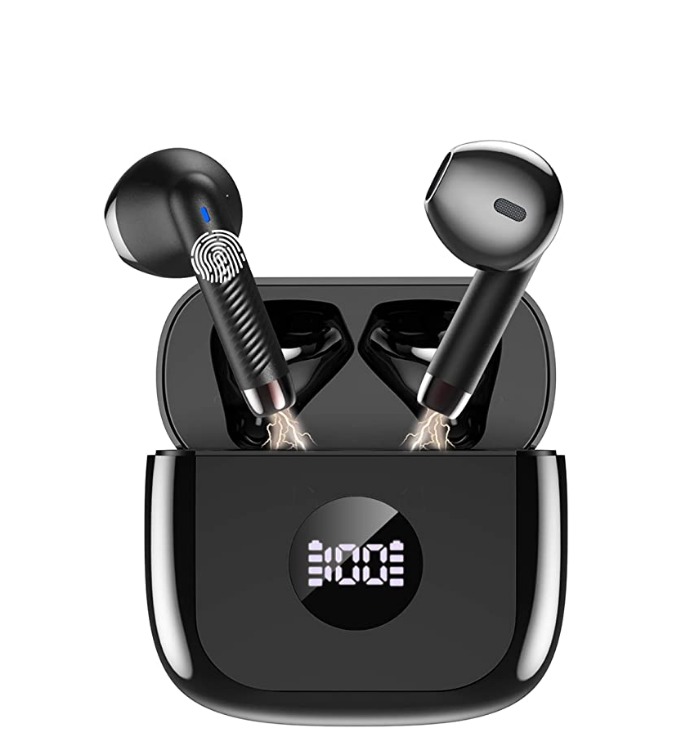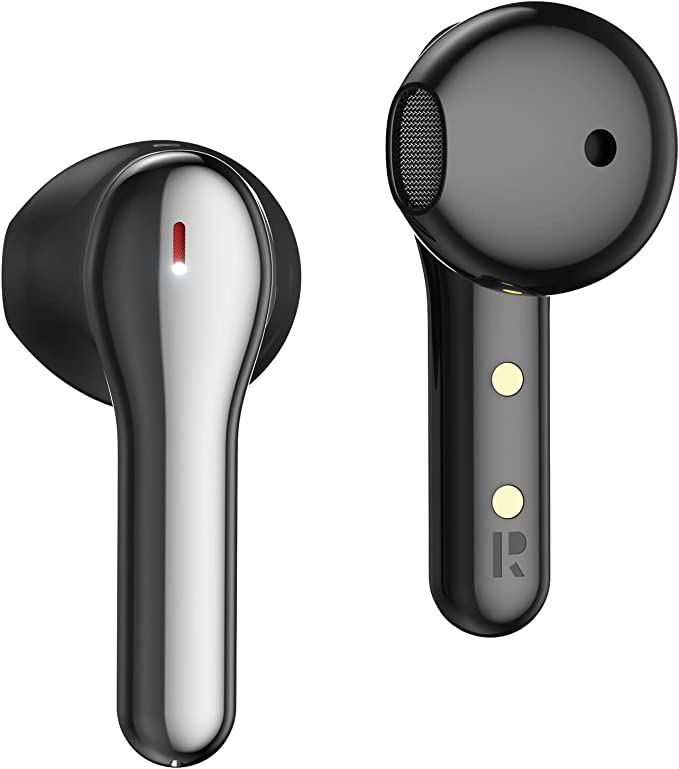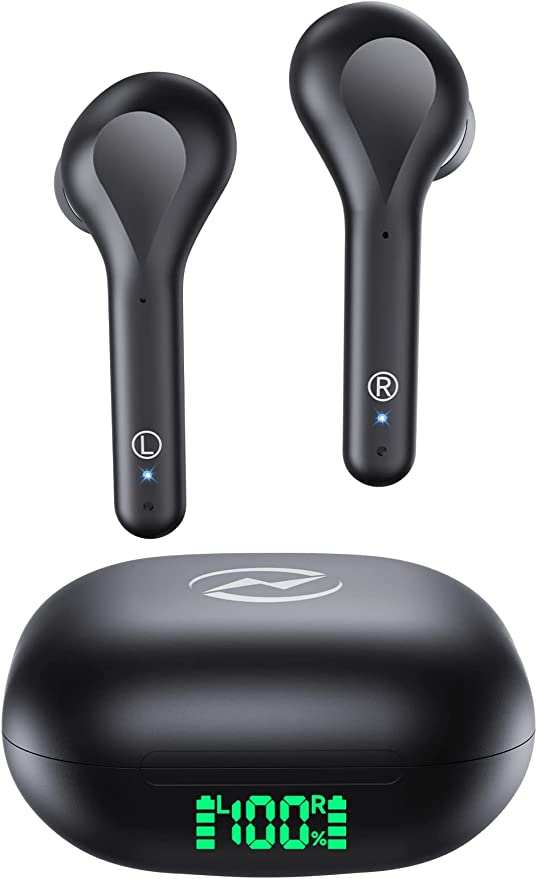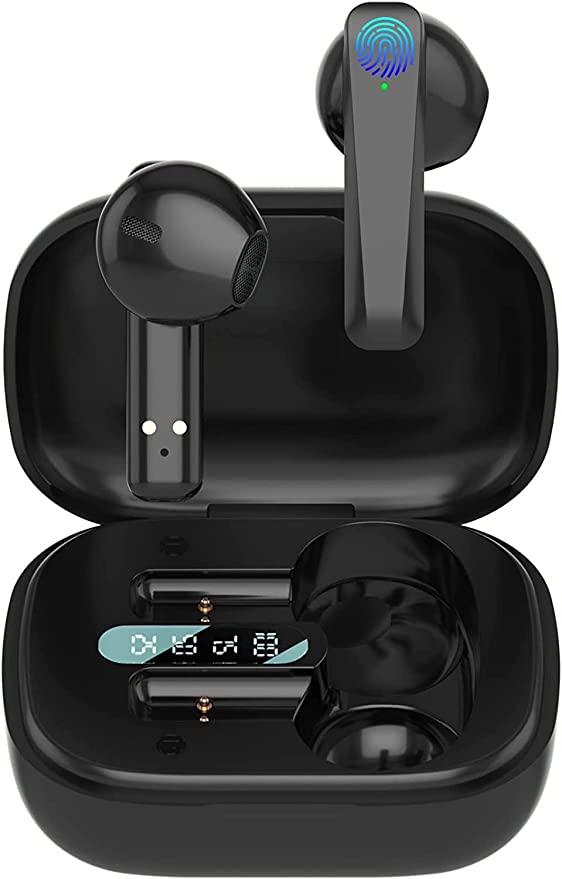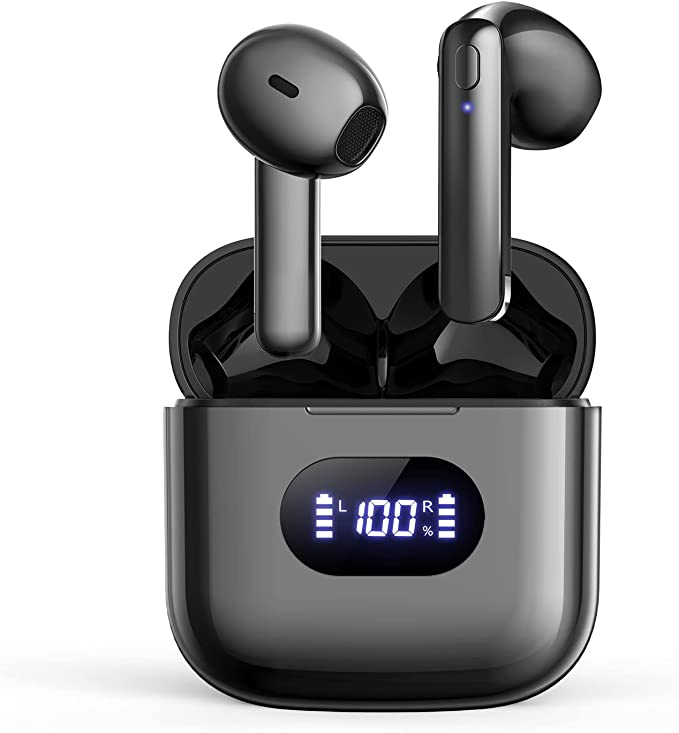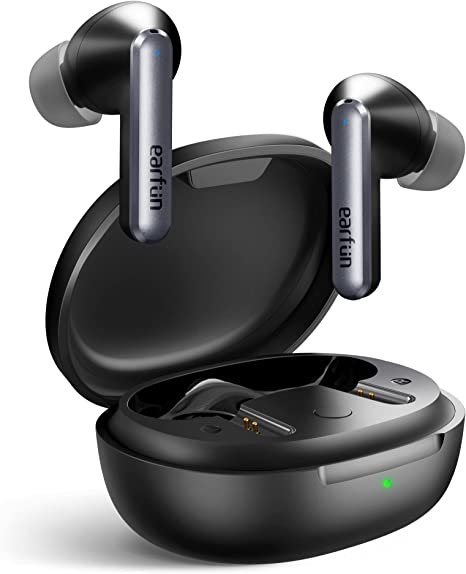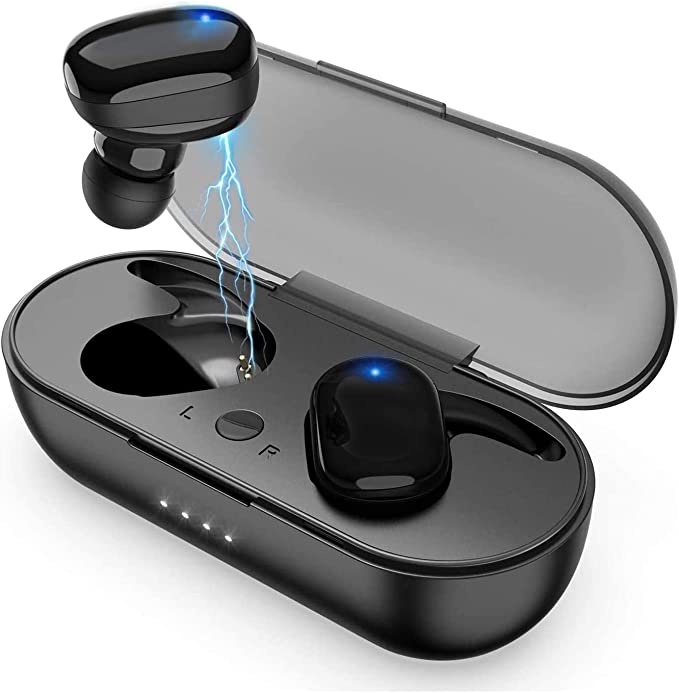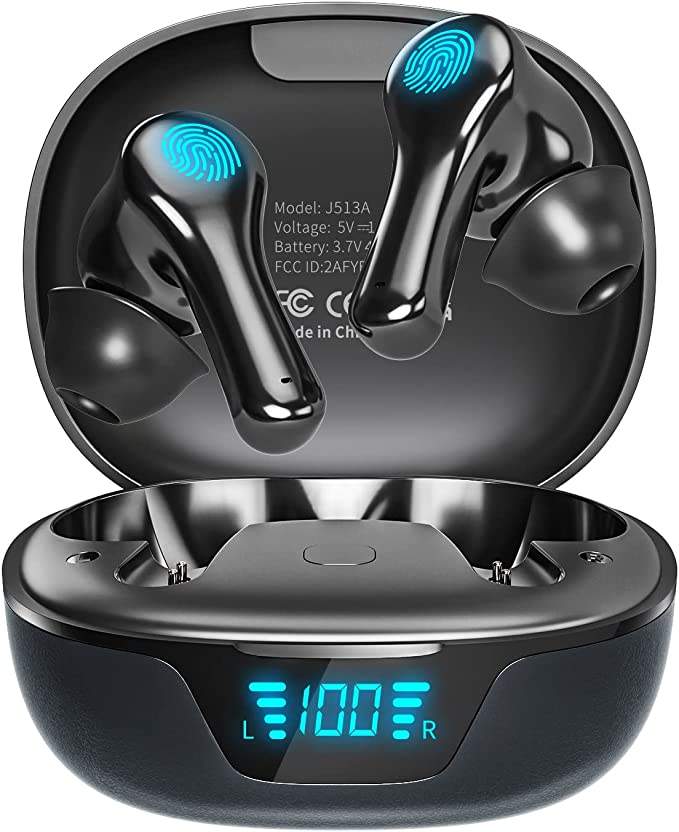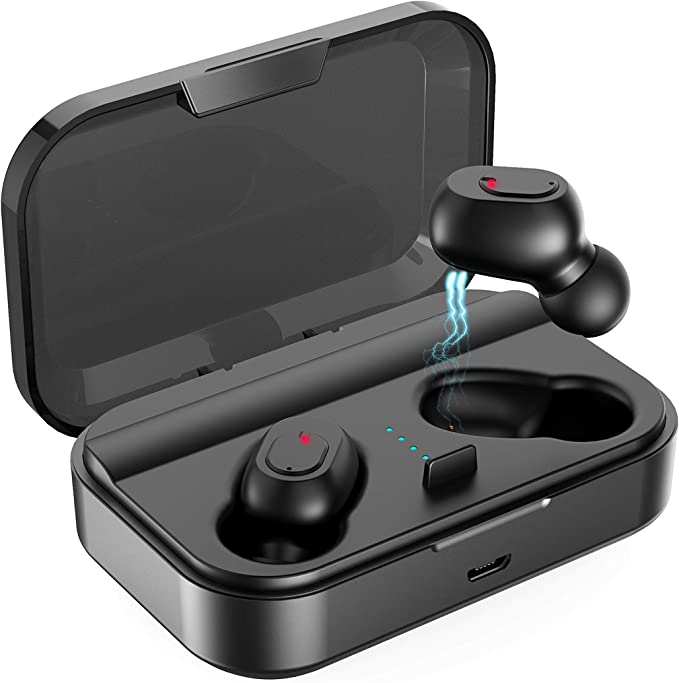OnePlus Buds Pro (E503A): The Science Behind Smart Adaptive Noise Cancellation and Personalized Sound
Update on May 14, 2025, 2:26 p.m.
In the relentless soundscape of modern life, from the urban clamor to the persistent hum of open-plan offices, many of us yearn for a sanctuary—a personal bubble where sound is curated, controlled, and utterly immersive. True Wireless Stereo (TWS) earbuds have emerged as potent tools in this quest. Today, we’ll dissect one such example, the OnePlus Buds Pro (model E503A). While its Amazon product page indicates it’s “currently unavailable” (having first been listed on September 1, 2021), its feature set provides a fascinating lens through which to explore the intricate audio engineering and scientific principles that defined advanced TWS earbuds of its time. Our exploration will draw exclusively from the provided Amazon product information for device-specific details and user sentiments, illuminated by established scientific understanding.

Crafting Calm: The Intricate Dance of Smart Adaptive Noise Cancellation
The allure of escaping into your own world of sound often begins with silencing the one around you. Active Noise Cancellation (ANC) is the technology that makes this possible, and its journey from specialized aviation headsets (designed to combat deafening engine noise for pilots) to ubiquitous consumer earbuds is a testament to its profound utility. The OnePlus Buds Pro promised “Smart Adaptive Noise Cancellation,” a system designed to “automatically adapt to your ambient sound environment,” according to its product information.
But how does this electronic wizardry actually work? Imagine unwanted sound as a series of waves rippling through the air. ANC works by creating a precise “anti-wave”—a mirror image of the incoming noise. When these two waves meet, they effectively cancel each other out through a phenomenon physicists call destructive interference. To achieve this, the earbuds employ tiny microphones. Some face outward, constantly sampling the environmental cacophony. Others might even be placed inside the ear cup to listen to what you’re actually hearing, allowing the system to fine-tune its anti-noise signal for optimal cancellation. This entire process is managed by a sophisticated onboard digital signal processor (DSP). The “Smart Adaptive” part suggests this DSP isn’t just applying a one-size-fits-all cancellation; it’s likely analyzing the specific nature and intensity of the surrounding noise in real-time and adjusting the level and characteristics of the anti-noise accordingly. Is it a steady drone of an air conditioner or the unpredictable chatter of a crowd? The system aims to respond intelligently.
The value of effective ANC is immediately apparent. For commuters, it can transform a jarring journey into a tranquil interlude. In a busy office, it can carve out a pocket of focus. For travelers, it makes long flights significantly less fatiguing. Users of the OnePlus Buds Pro, according to the Amazon product page, experienced this benefit. L. Burford (Verified Purchase) found the “noise cancelling actually works well,” and R. Jacobson (Verified Purchase) praised the “fantastic isolated sound even in noisy conditions.” User ‘J’ (Verified Purchase) described it as a “Great Noise Canceling feature!” However, the pursuit of silence isn’t always without subtle artifacts. M.K.H. (Verified Purchase) noted an occasional “ear pressure’ feeling,” a sensation some users report with strong ANC, while L. Burford also mentioned a “bit of extra noise/static you will hear while its working.” These user-reported nuances highlight the complex challenge of perfectly manipulating sound waves.

The Soul of the Sound: Unpacking 11mm Drivers and Personalized Audio ID
Once the unwelcome noise is diminished, the quality of the sound you do want to hear takes center stage. The OnePlus Buds Pro aimed for a “Superior Audio Experience,” built upon two key pillars mentioned in its Amazon product data: substantial drivers and personalized sound tuning.
The Engine of Emotion: Those 11mm Dynamic Drivers
At the heart of any earbud or headphone are its drivers—the miniature speakers that convert electrical signals into the sound waves your ears perceive. The OnePlus Buds Pro utilized “11mm dynamic drivers.” In a dynamic driver, an electrical audio signal flows through a voice coil attached to a diaphragm (a thin, cone-like membrane), all within a magnetic field. This creates a fluctuating electromagnetic force that causes the diaphragm to vibrate rapidly, pushing air and creating sound waves. The “11mm” refers to the diameter of this diaphragm. Generally speaking, a larger diaphragm can move more air, which is particularly advantageous for reproducing lower frequencies. This aligns with OnePlus’s claim of “Powerful, Punchy Bass – Drop the bass with 11mm dynamic drivers.”
User experiences from the Amazon product page seem to corroborate this. Noah S (Verified Purchase) stated, “Sound is awesome, it’s got some punch,” and R. Jacobson (Verified Purchase) found the “bass is punchy enough and it makes for a really enjoyable listening experience.”

Your Unique Hearing Blueprint: OnePlus Audio ID
Beyond the raw capability of the drivers, OnePlus introduced “OnePlus Audio ID,” promising to let you “Hear and feel every note on your playlist with a personalized hearing profile for a precisely tailored audio experience.” This hints at a fascinating intersection of audio technology and psychoacoustics—the study of how humans perceive sound.
The science is compelling: no two individuals hear the world in exactly the same way. Our hearing acuity varies across different frequencies, influenced by age, genetics, and our history of noise exposure. A “personalized hearing profile” likely means the system, probably via the companion “HeyMelody” app (which user Rob V. (Verified Purchase) from the Amazon data mentions having a “built-in hearing test”), conducts a quick audiogram-like assessment. This test would measure your hearing sensitivity at various key frequencies. Based on these results, the system then creates a custom equalization (EQ) curve. This EQ doesn’t just boost or cut frequencies arbitrarily; it aims to compensate for your specific hearing variations, ensuring that the sound you hear is as close as possible to what the audio engineers intended, “precisely tailored” to your ears.
The real-world impact of such features can be subjective. While user ‘J’ (Verified Purchase) from the Amazon data mentioned, “I can’t tell if there is a significant difference” with Audio ID, Rob V. (Verified Purchase) found the sound “to be quite natural with plenty of bass” after doing the hearing test compensation. This underscores that personalized audio features can offer tangible benefits, though their perceived effectiveness can vary from user to user.
The Art of Being Heard: AI in the Realm of Call Clarity
In an age where earbuds frequently double as communication headsets for calls and virtual meetings, call clarity is non-negotiable. The OnePlus Buds Pro addressed this with “AI powered noise reduction algorithms, noise-reducing microphones, and an elegant design all combine to enable crystal-clear calls,” according to its Amazon product data.
Let’s unpack the “AI” aspect. This doesn’t imply a sentient intelligence residing in your earbuds. Rather, it refers to sophisticated digital signal processing (DSP) and machine learning algorithms. These earbuds likely feature multiple microphones. By comparing the signals received by these microphones, the system can better distinguish the user’s voice (which will arrive at each microphone with slight timing and intensity differences) from ambient noise. This is a basic principle behind beamforming, where the system can create a “listening beam” focused towards the speaker’s mouth. The “AI algorithms” then work to further filter out the identified background noise, allowing the voice to come through more clearly to the person on the other end of the call.
User feedback from the Amazon source suggests this technology was effective. L. Burford (Verified Purchase) was told by a friend that they “sounded really good.” Even more impressively, MadMu5icJunky (Verified Purchase) reported, “Call quality is fantastic. I had my desk fan blowing directly on them on high and intentionally did a lot of shuffling and dropping pens on my desk, etc, and NOTHING could be heard when I played the recording back.”
The Unseen Pillars: Power, Durability, and Seamless Flow
Beyond the headline audio features, the practical aspects of daily use—battery life, resilience, and connectivity—are crucial for a satisfying TWS experience.
Fueling the Experience: Battery Stamina & Warp Speed Charging
The promise of “up to 38 hours (ANC off) of battery life” (presumably including recharges from the case, as per the Amazon data) is substantial. However, enabling power-hungry features like ANC typically reduces per-charge playtime. User ‘J’ (Verified Purchase) from the Amazon source provided a real-world data point: “With Noise canceling, I feel I get about 4 hours max with continuous music playing,” while also noting that it was “advertised as 5 hours.” This transparency is valuable for setting user expectations.
When the inevitable recharge is needed, “Warp Charge” technology, a OnePlus hallmark, aimed to minimize downtime: “Plug-in and charge for 10 minutes, listen for 10 Hours” (from Amazon data). The science behind such rapid charging involves carefully managing the flow of higher currents and voltages to the Lithium-ion battery cells. Specialized power management integrated circuits (PMICs) within the earbuds and case monitor temperature and cell health to deliver this accelerated charge safely and efficiently, striking a balance between speed and long-term battery well-being.
Ready for Rain or Shine: The IP55 Resilience Factor
For those who take their music to the gym or brave the elements, durability matters. The OnePlus Buds Pro were “Rated IP55 for water and sweat resistance” (Amazon data). “IP” stands for Ingress Protection, a standardized rating system. The first digit, ‘5’, indicates a good level of protection against dust ingress (not entirely sealed, but enough to prevent interference with operation). The second digit, also ‘5’, signifies protection against low-pressure water jets from any direction. This makes the earbuds suitable for workouts (“perfect for outdoors and the gym,” as the Amazon data states) and resilient against sweat or a sudden light rain shower.
The Effortless Handshake: Pairing & Dual Connections
Ease of connection is fundamental. The Buds Pro touted “Fast and Smooth Pairing. Sync to your OnePlus smartphone as soon as you open the charging case” (Amazon data). For broader utility, they featured “Dual Connection, sync to two Bluetooth devices simultaneously for fast switching without reconnecting.” This is an implementation of Bluetooth Multipoint technology, a highly convenient feature for users who, for example, listen to music on a laptop but need to quickly switch to their phone to take a call. L. Burford (Verified Purchase) from the Amazon source specifically called this “a really cool feature,” and User ‘J’ (Verified Purchase) lauded it as the “BEST feature.”
The Conversation with Your Tech: Controls & Customization (The HeyMelody Bridge)
Interacting with these sophisticated devices should be intuitive. The OnePlus Buds Pro employed “pinch” controls on the stems, as user ‘J’ (Verified Purchase) from the Amazon data described: “You pinch the body of the earbud for the controls and it makes a nice click sound so you know right away what you are doing.”
However, a notable point of user feedback from the Amazon source was a limitation in these controls. Multiple verified purchasers (L. Burford, J, Rab, Jav X) highlighted the absence of on-bud volume adjustment, requiring users to reach for their connected device to change volume levels. This serves as a reminder that product design often involves complex trade-offs between functionality, form factor, and control schemes.
For users not on a OnePlus smartphone, or for those seeking deeper customization, the “HeyMelody” app (as mentioned by users like L. Burford and Rob V. in the Amazon product information) appears to have been the designated bridge. Rob V. (Verified Purchase) indicated this app provided access to “an equalizer, auto-creation of a flat response curve based on a built-in hearing test, a test for proper sealing of the buds in your ears, and various option settings,” essentially unlocking the full suite of personalization features like Audio ID.
Echoes of Innovation: The OnePlus Buds Pro E503A in Perspective
The OnePlus Buds Pro E503A, as detailed through its Amazon product information and the experiences of its users, emerges as a sophisticated piece of audio engineering. It integrated a compelling array of technologies—Smart Adaptive Noise Cancellation, large dynamic drivers coupled with personalized Audio ID, AI-assisted call clarity, rapid Warp Charging, and robust IP55 resilience—all hallmarks of a premium TWS offering from its era.
While this particular model, first available September 1, 2021, is now cited as “currently unavailable” on its Amazon listing, the scientific principles and engineering ingenuity it embodied continue to resonate. The relentless drive for more effective noise cancellation, richer and more personalized sound reproduction, crystal-clear voice communication, and ever-more seamless user experiences remains the driving force in the evolution of personal audio. Understanding the science packed into devices like the OnePlus Buds Pro enriches our appreciation not just for the gadgets themselves, but for the remarkable symphony of physics, engineering, and software that shapes the soundtracks of our daily lives.





